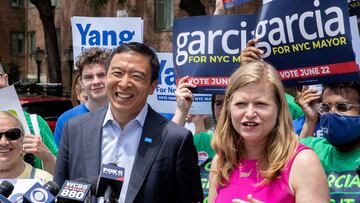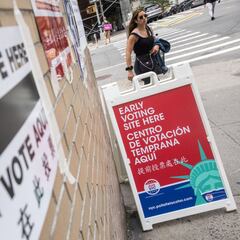What is a primary election?
In any year and at various times across the year state and local elections can take place as citizens come together to select a governor or mayor.

With attention currently focused on New York City as citizens head to the ballot boxes, many Americans - and others around the globe less familiar with US politics - are asking for information about primary elections and the process behind them.
New York election news:
- US stimulus checks: live updates
- NYC mayoral candidates and their endorsements
- Voter ID requirements in New York City
- How to vote in the NYC mayoral elections
- Who are the NYC mayoral candidates?
Primary elections: explained
The purpose of primary elections is simply to select candidates that will then run for public office. There are two types of ‘primaries’ that can be held, partisan and non-partisan. Partisan primaries are considered closed and only allow declared party members to vote while non-partisan primaries are open and enable all voters to take part without declaring their party allegiance.
Then there are direct and non-direct primaries, the former seeing voters elect their party’s candidates, and the latter is where they select delegates to choose the actual candidates at a special convention that is held.
What about caucuses?
As well as primaries, the other early option in the election process are caucuses. Unlike the secret ballot system, these see a gathering of voters decide together on a particular candidate.
Rise and shine, it’s #ElectionDay 🌞 This is our LAST CHANCE to make our voices heard in this primary, New York City. Let’s get it.
— Carlina Rivera 利華娜 (@CarlinaRivera) June 22, 2021
1️⃣ find your polling place: https://t.co/cYzy0tlpbP
2️⃣ show up to vote between 6 AM and 9 PM
3️⃣ celebrate your participation in our democracy 💃🏽 pic.twitter.com/KnOAkLFmUc
New York primary election: what’s happening?
Related stories
For the first time, the New York mayoral primaries are employing a ranked-choice voting system. This allows voters to list their top five favourite candidates in order and then automatically eliminates the least popular candidate one-by-one until one of them is left with at least 50% of the vote.
Once all votes are cast, all of the first choice ballots will be counted. If no one secures more than half of the first choice votes then the candidate with the fewest will be eliminated and anyone who chose them will have their second choice counted instead. This process continues until a candidate reaches the 50% threshold and is named the winner.

